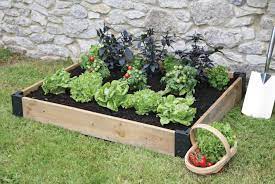Introduction
In a world that’s increasingly conscious of health and sustainability, creating an edible garden has become a popular trend. More than just a hobby, cultivating your own fruits and vegetables brings a sense of accomplishment and provides a bounty of benefits for your well-being and the environment.
Planning Your Edible Garden
Choosing the Right Location
One of the first steps in creating an edible garden is selecting the right spot. Ensure your garden receives ample sunlight and is easily accessible for regular maintenance. Consider the proximity to water sources as well.
Selecting the Right Plants
Different plants thrive in various conditions. Choose crops that are suitable for your climate and soil type. This ensures a higher chance of success and a fruitful harvest.
Soil Preparation and Composting
Importance of Healthy Soil
Healthy soil is the foundation of a thriving garden. Invest time in soil preparation by adding organic matter to improve fertility. Composting kitchen waste is an excellent way to enrich the soil naturally.
Composting Tips
Create a composting system with a mix of green and brown materials. Turn the compost regularly to encourage decomposition. This sustainable practice reduces waste and enhances soil structure.
Planting and Maintaining Your Edible Garden
Proper Plant Spacing
Avoid overcrowding by following recommended plant spacing. This prevents competition for nutrients and sunlight, promoting healthier growth.
Watering and Sunlight Requirements
Consistent watering and providing adequate sunlight are crucial for plant development. Be mindful of each plant’s specific needs to optimize growth.
Pest Control
Implement natural pest control methods such as companion planting and introducing beneficial insects. Minimize the use of chemical pesticides to maintain an eco-friendly garden.
Seasonal Considerations
Best Plants for Each Season
Rotate crops based on the seasons to maximize yield and reduce soil depletion. Certain plants thrive in specific seasons, so plan accordingly.
Adjusting Care Based on Season
Adapt your care routine to seasonal changes. Winter may require additional protection for delicate plants, while summer demands increased hydration.
Harvesting Your Homegrown Produce
Picking at the Right Time
Harvest fruits and vegetables when they reach peak ripeness. This ensures the best flavor and nutritional content.
Storage Tips
Proper storage techniques extend the shelf life of your homegrown produce. Invest in suitable containers and refrigeration methods.
Benefits of Edible Gardens
Health and Nutrition
Homegrown produce is often fresher and more nutrient-dense than store-bought alternatives. Enjoy the health benefits of consuming organic, pesticide-free fruits and vegetables.
Cost Savings
Save on grocery bills by producing your own food. Initial investments in seeds and equipment pay off in the long run, offering substantial cost savings.
Environmental Impact
Reducing your carbon footprint, creating an edible garden contributes to a sustainable lifestyle. It minimizes transportation and packaging associated with store-bought produce.
Troubleshooting Common Issues
Dealing with Pests
Identify pests early and employ organic pest control methods. Neem oil, diatomaceous earth, and companion planting are effective strategies.
Recognizing Plant Diseases
Monitor plant health to identify signs of diseases. Prompt action, such as pruning infected parts and using natural remedies, can prevent the spread.
Success Stories
Real-life Experiences
Explore success stories from individuals who transformed their spaces into flourishing edible gardens. Learn from their challenges and triumphs.
Community Involvement
Join local gardening communities or start one yourself. Shared experiences and knowledge contribute to a supportive and thriving gardening network.
Conclusion
Creating an edible garden is a rewarding journey that combines the joys of gardening with the satisfaction of producing your own food. Embrace this sustainable lifestyle for a healthier, more flavorful future.
Frequently Asked Questions (FAQs)
- How much space do I need for an edible garden?
The space required depends on the number and types of plants you want to grow. Even small spaces like balconies can be utilized efficiently.
- Are there easy-to-grow plants for beginners?
Yes, herbs like basil and mint, and vegetables like tomatoes and lettuce, are beginner-friendly.
- How do I deal with common garden pests?
Natural methods like introducing beneficial insects, companion planting, and using neem oil can effectively control pests.
- Can I create an edible garden indoors?
Absolutely! Indoor gardening with containers is a great option, especially for those with limited outdoor space.
- What are the essential tools for maintaining an edible garden?
Basic tools include a trowel, pruners, watering can, and gloves. Tailor your tools based on your garden’s specific needs.
